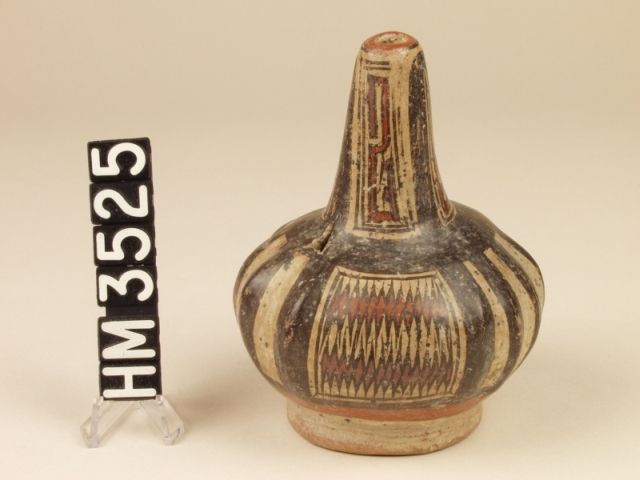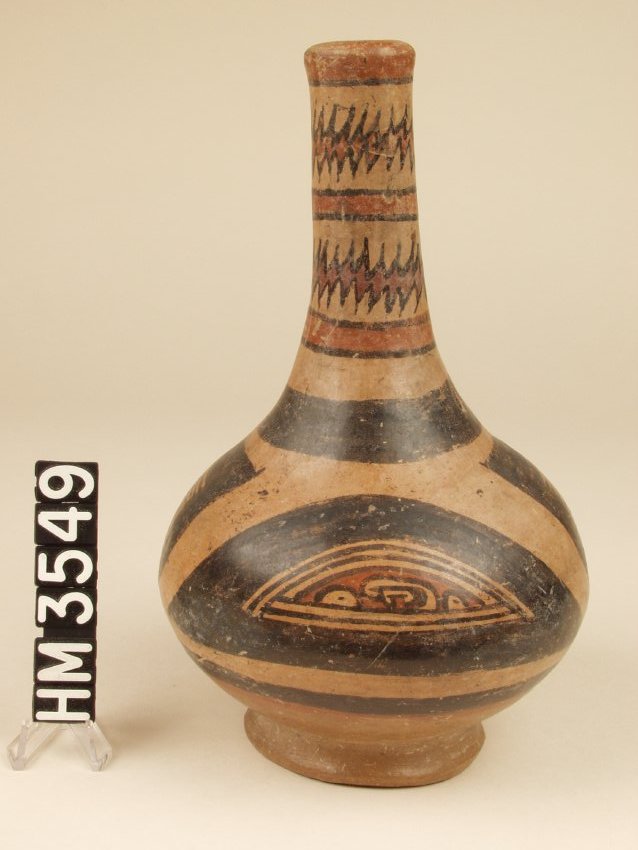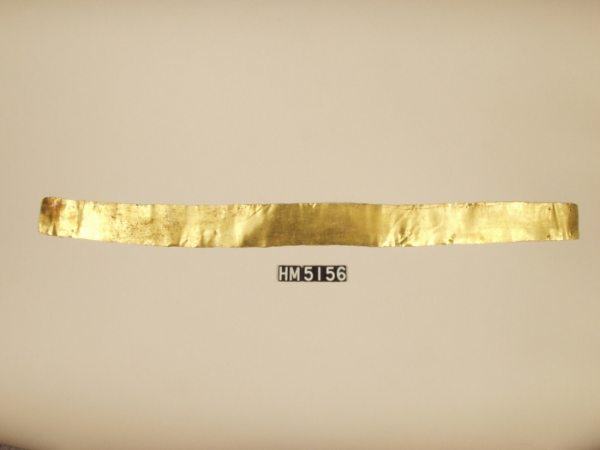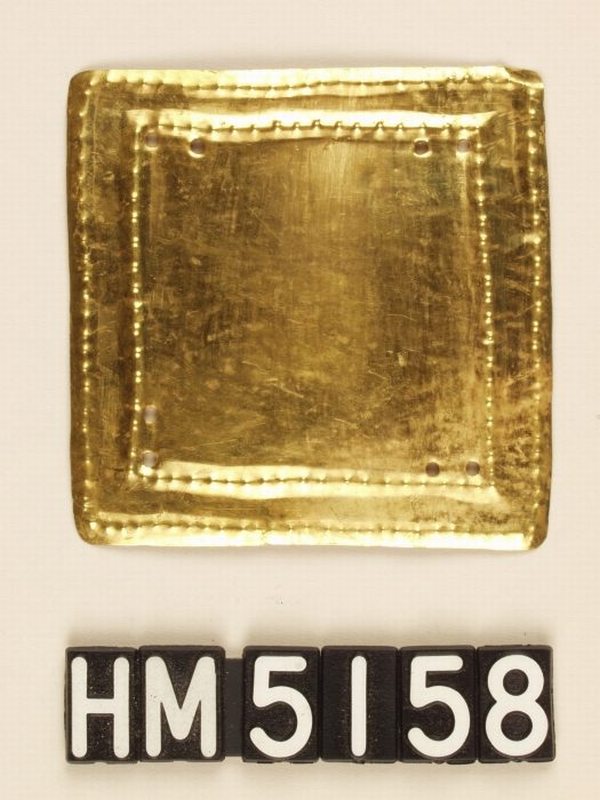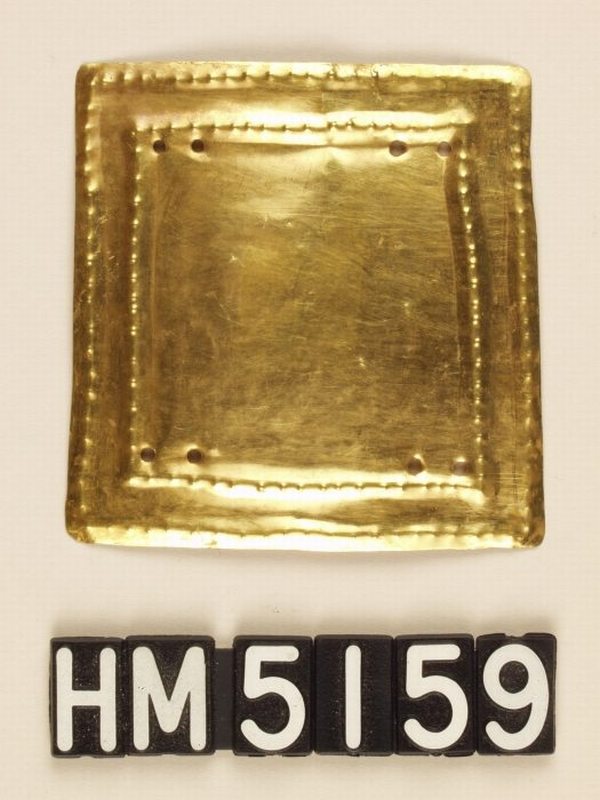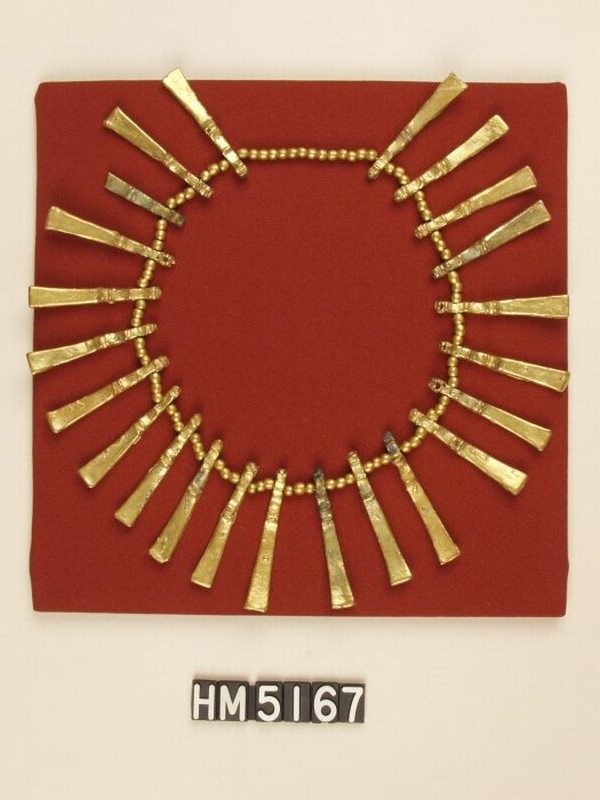Contact With the Supernatural
Rituals involving shark teeth or stingray spines as bloodletters were directed toward establishing contact with the supernatural. Heavy ceremonial drinking an the use of various plants to induce hallucinations have also been used in the Americas for the same purpose. Trance-producing substances were used in pre-Columbian Colombia and Costa Rica but use of hallucinogenic substances is not clearly indicated for Panama, although heavy ceremonial drinking did occur. At the time of the Spanish conquest, however, tobacco, which can facilitate trace, was smoked in the form of cigars so large (two or three feet long and as thick as a man’s wrist) that an assistant was required to hold them and to puff smoke which the imbiber inhaled and possibly swallowed. Tobacco and other hallucinogenic plants can also be ingested as muff.
Several types of Panamanian vessels directly or indirectly may reflect use of hallucinogens or trance enhancers. Small globular jars with short necks and narrow aperture possibly may have been used as snuffers. Larger open-mouthed carafes with long thin spouts may have served this purpose, too. Their overall shape is somewhat suggestive of snuffers from Costa Rica. Conceivably small, flat-topped pedestal plates were used to hold snuff that would have been ingested by nose tubes, somewhat as Columbus observed in Hispaniola.
Pedestal plates are also suggestive of mushrooms, a widely used form of hallucinogen which have been identified on gold pieces from Colombia. Panamanian pedestal plates share a number of similarities particularly with gill mushrooms of the genus Amanita. (This genus includes Amanita muscoria, the hallucinogenic fly agaric). For example, the flat, concave top of the plates correlates with the often Fla or depressed shape of the mushroom cap which sometimes has an upturned rim; the stem of the mature Amanita is hollow, as are the pedestal portions of the ceramic plates; the thickened, bulbous base of the mushroom stem is suggested b the flare at the bottom of the pedestal; the cap of the mushroom is shiny, as were the pedestal plates when glazed, and colored red to orange, yellow or whitish, not unlike the base or ground color of pedestals and plates. Conceivably the whitish remnants or scales of the universal veil that “spot” the cap of the mushroom could be compared, in a sense, to the decorating of the pedestal plate with specific designs.
The suggested relationship between design and a possible hallucinogenic medium is not entirely fanciful, for many native peoples of Tropical America maintain that the designs they use to decorate house walls, basketry, ceramics are inspired by and based upon hallucinatory experiences. Similarly, Spanish observers in 16th century Panama noted that when supernatural spirits appeared to religious leaders they assumed a variety of forms and colors which were then depicted in figures of gold relief and carved on wood.
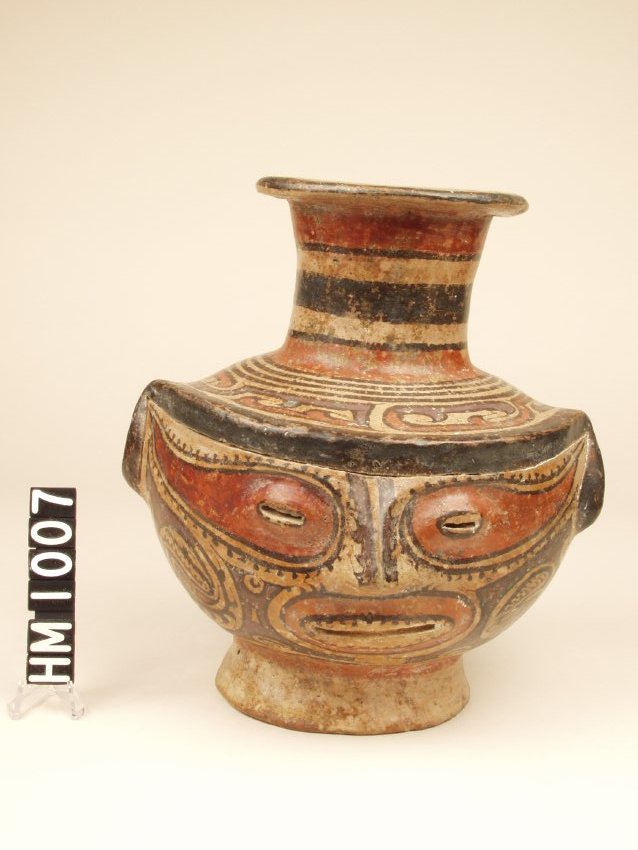
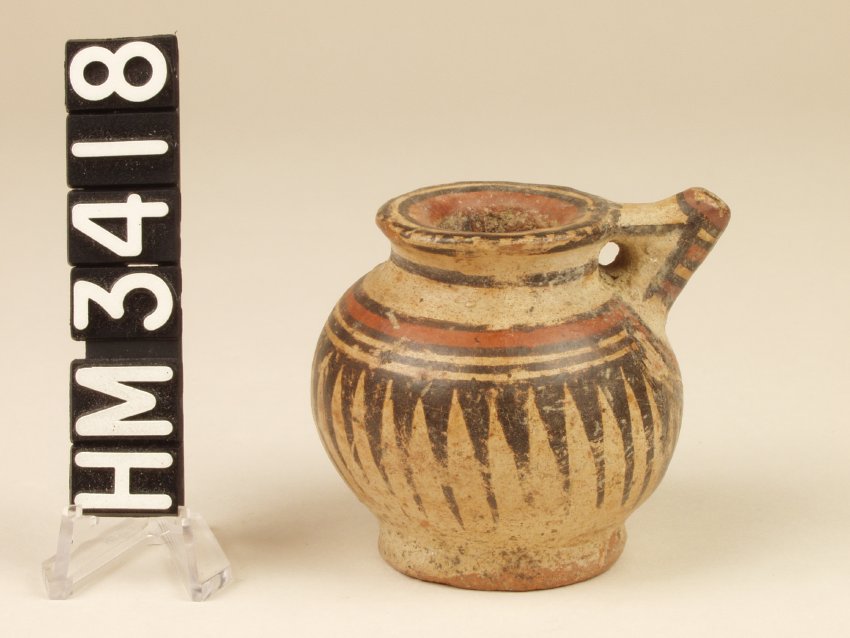
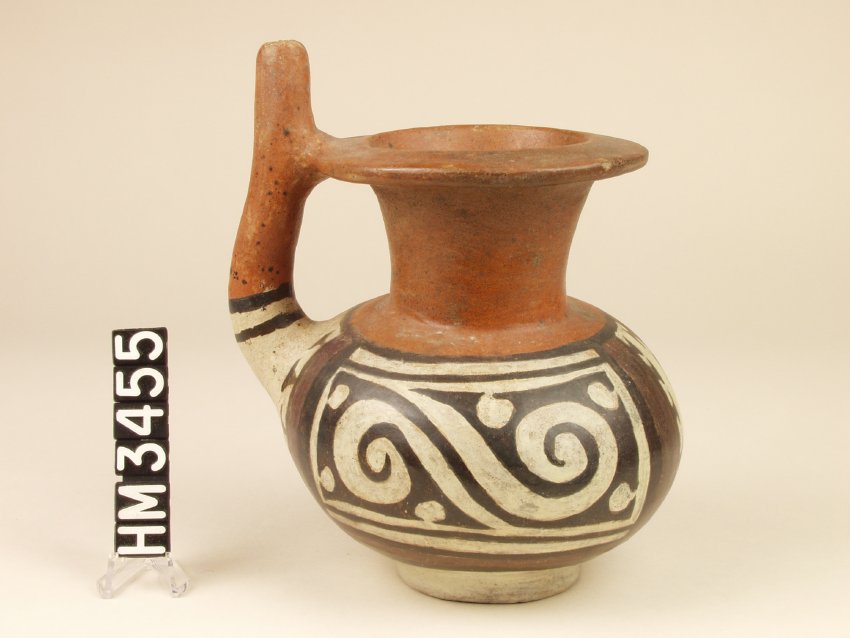
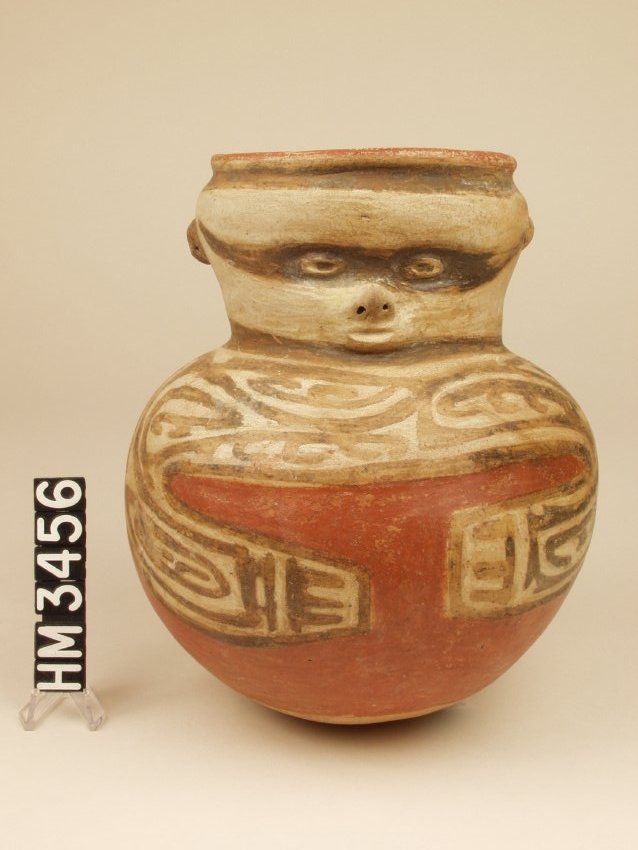
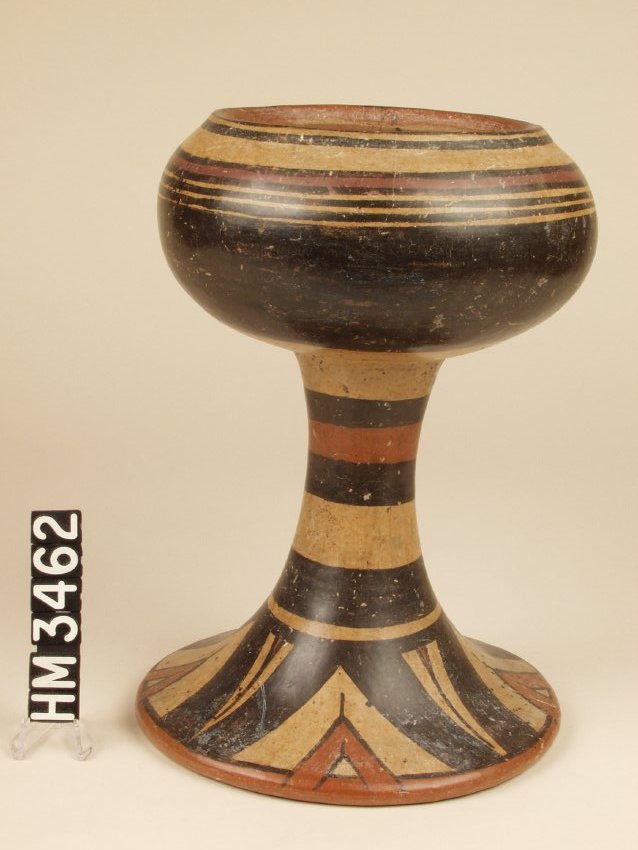
Polychrome Ceramic Pedestal Bowl
A.D. 600-800
Conte (Early Conclé) Period
Sitio Conte, Conclé
HM3462
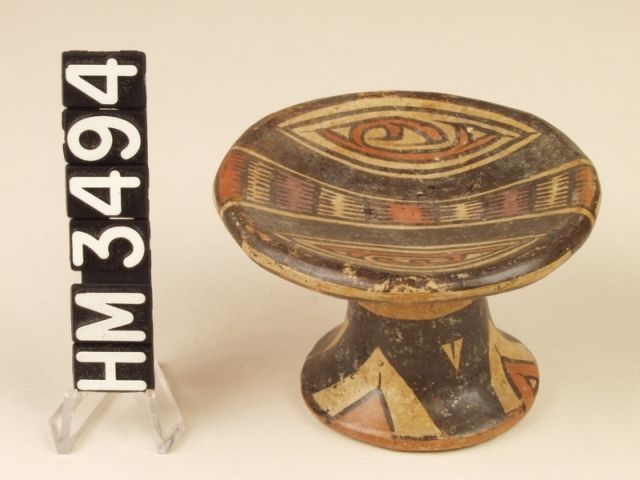
Polychrome Ceramic Pedestal Plate
A.D. 800-1000
Macaracas (Late Coclé) Period
Pica Pica Variety
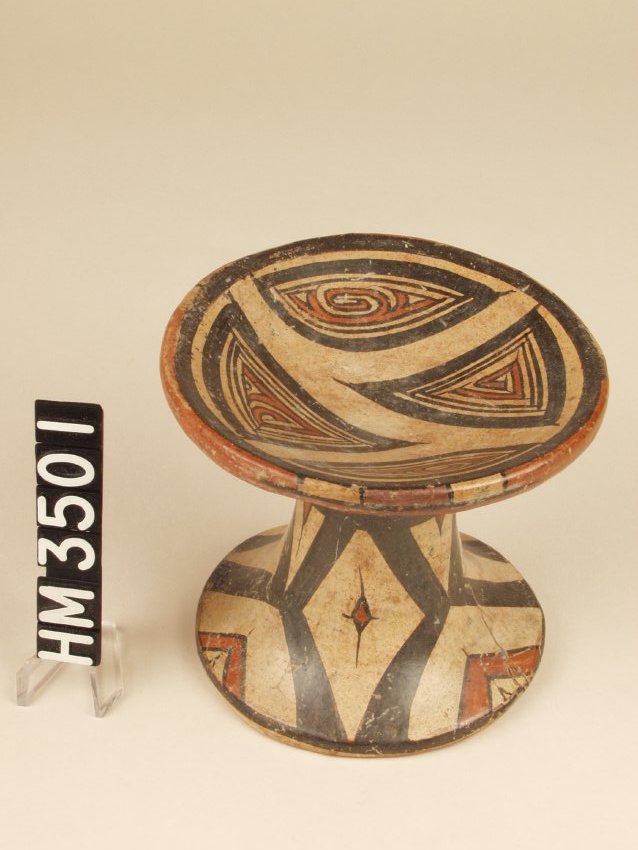
Polychrome Ceramic Pedestal Plate
A.D. 800-1000
Macaracas (Late Coclé) Period
Pica Pica Variety
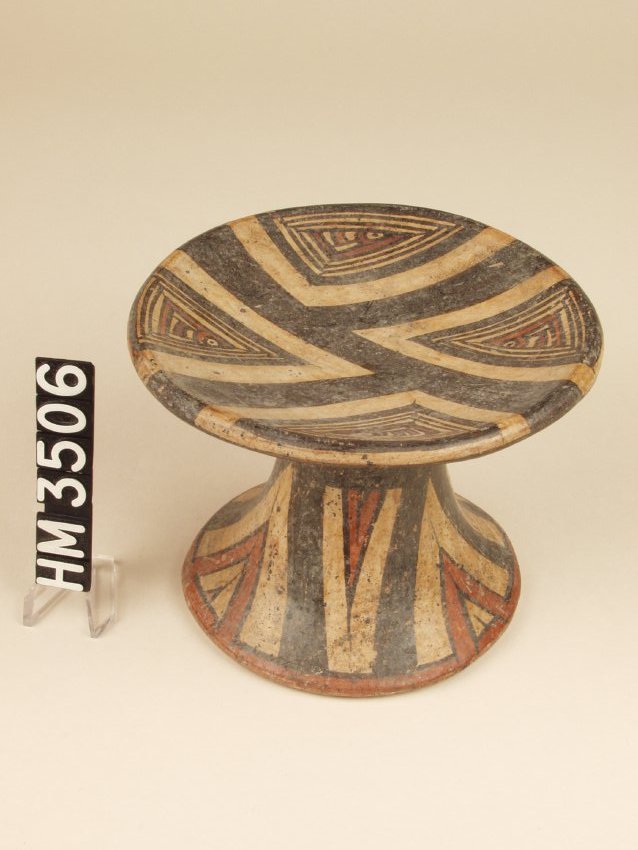
Polychrome Ceramic Pedestal Plate
A.D. 800-1000
Macaracas (Late Coclé) Period
Pica Pica Variety
